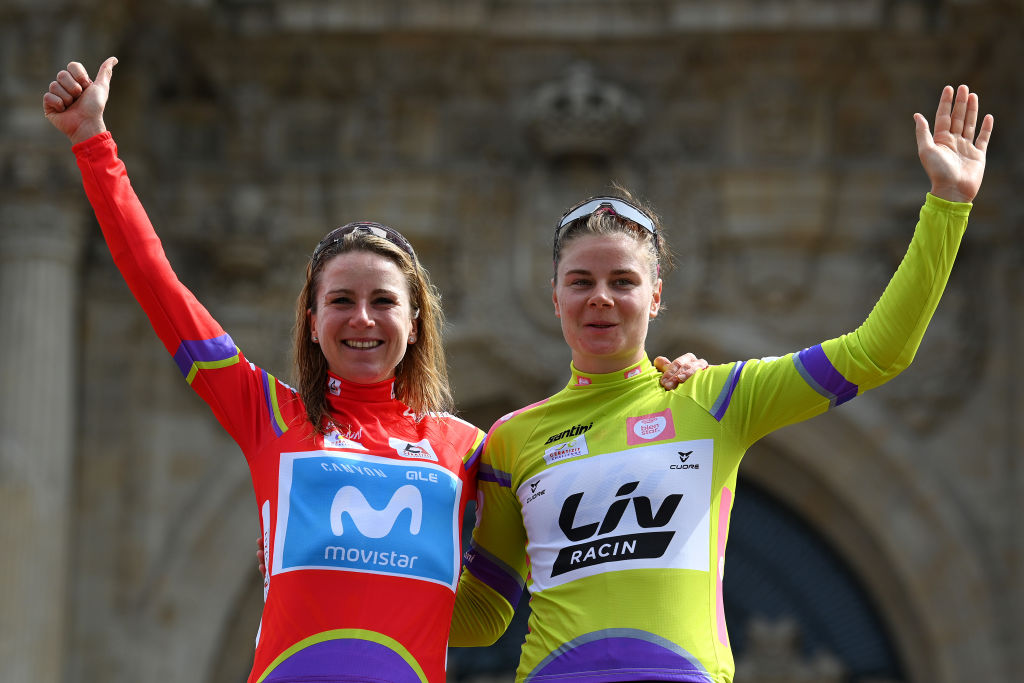'Toughest route yet' - Challenge by La Vuelta revealed
Inaugural team time trial, mid-mountain stages, an explosive finale make up expanded five-day race

Organisers of the Ceratizit Challenge by La Vuelta have announced the route of its expanded five-day race held from September 7-11, calling it the "toughest route yet". For the first time, the event will feature five stages, one more than the previous edition, in a varied route that traverses northern and central Spain.
Confirmation that the race had expanded happened last December at the official route presentation for the men's Vuelta a España at the Palacio Municipal – IFEMA in Madrid, however, limited details for the women's event were revealed at that time.
"You only have to see the extremely high level of participation in 2021 to understand its importance in the Women’s WorldTour calendar. We must respond to the challenge demanded by the riders, and do so by making it the toughest route to date," said Javier Guillén, general director of Unipublic, at that time.
The route’s official presentation took place at the Palacio de Festivales de Cantabria, in Santander, and included vice-president of the Government of Cantabria, Pablo Zuloaga, and Guillén.
Organisers have revealed that this year's race will begin with a team time trial in the seaside town of Marina de Cudeyo, Cantabria. The route will make its way almost directly south over the five days to finish on September 11 in Madrid.
The race will remain in the Cantabria region for stage 2 where it will tackle a series of five mountain passes, two of them category 1 climbs including the 3.2km long Campo la Cruz with a gradient of 8%.
Another mountainous stage awaits the peloton the next day from Camargo to Aguilar de Campo. The Hoces de Bárcena – a 16km climb with an average gradient of 3.4% – will be the main obstacle, after a smaller category 3 climb.
Get The Leadout Newsletter
The latest race content, interviews, features, reviews and expert buying guides, direct to your inbox!
Stage 4 will be the longest stage to date in the event’s history and its 160 kilometres are largely flat but contain an uphill section at the finish.
Finally, an urban circuit in Madrid on September 11 will conclude the race, offering an opportunity for the sprinters to collect a stage victory.
Racing in the Spanish capital marks a return to the origins of the Ceratizit Challenge, for it began life as a one-day race in Madrid. American Shelley Olds (then Bigla Pro Cycling Team) won that first edition, but as the race added more stages over the years it has become more suited to GC riders such as Annemiek van Vleuten (Movistar) who last won the red jersey in 2021.
Adding stages to a pre-existing race has set a trend for other race organisers to follow: the one-day race La Course will metamorphose into an eight-day Tour de France Femmes in July, the RideLondon Classique returned as a three-day event and the Tour of Scandinavia has also gained two extra stages this season.
Issy Ronald has just graduated from the London School of Economics where she studied for an undergraduate and masters degree in History and International Relations. Since doing an internship at Procycling magazine, she has written reports for races like the Tour of Britain, Bretagne Classic and World Championships, as well as news items, recaps of the general classification at the Grand Tours and some features for Cyclingnews. Away from cycling, she enjoys reading, attempting to bake, going to the theatre and watching a probably unhealthy amount of live sport.